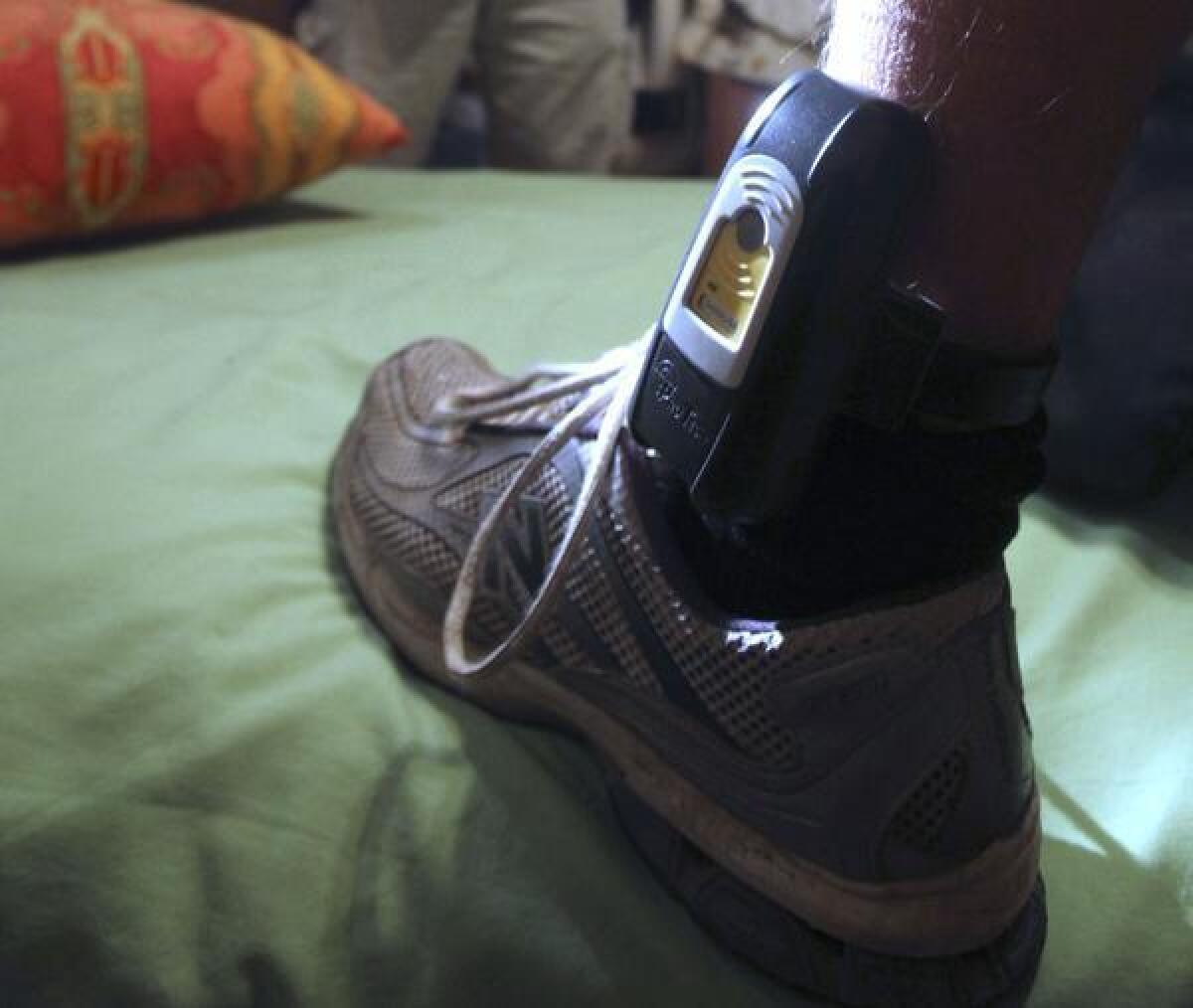Probation officials concede failures in GPS tracking of felons

- Share via
Los Angeles County probation officials Tuesday conceded widespread failures in their electronic monitoring of felons, in which probation deputies were deluged with meaningless alerts while offenders went untracked for days and weeks at a time.
“This is a blueprint of how not to implement a GPS program,” Probation Chief Jerry Powers told the county Board of Supervisors. He said deputies were not at fault, but blamed department administrators and the vendor who sold the county the service.
The hearing was triggered by a Feb. 15 story in The Times disclosing that deputies assigned to supervise felons with global positioning satellite monitoring received about 20,000 meaningless or mundane alerts a month. In some cases, deputies said they ignored the messages, or worried that the deluge obscured serious warnings when an offender was about to flee.
The probation department told the newspaper that it lost track of 80 felons while they were on electronic monitoring in 2013. However, the department told The Times it could not immediately identify those absconders.
Supervisor Michael D. Antonovich, an electronic monitoring critic who requested Tuesday’s hearing, focused on problems with the county’s leased equipment, including batteries that died. Antonovich pressed for emergency action to seek a new contractor.
“If there are not any vendors out there, we should not continue with a failed policy by subsidizing a failed contractor,” Antonovich said.
But Powers faulted his own department for “inadequate and/or nonexistent” training and policies, including failing to require deputies to follow up when a GPS alert was triggered. He said department managers also failed to monitor the GPS vendor and to resolve problems as the program grew to include prison felons released to local supervision under the state’s efforts to relieve prison crowding.
He said changes were being made immediately.
By the end of this week, the probation department intends to reduce thousands of alerts created when offenders drive or ride through about 4,800 violation zones that blanket Los Angeles County, including every school and park. It will use software to calculate the speed of monitored offenders and ignore alerts created by those moving quickly.
The department ultimately intends to remove those default zones and establish prohibited areas unique to each offender, a goal set for this spring. Officials are also in the midst of creating a 12-person unit of deputies trained to use electronic monitoring. Some officers told The Times that they never were instructed how to use the system and were unaware that they could determine a felon’s past or current location.
Los Angeles County officials said they were also tackling equipment problems they have had with the GPS ankle monitors provided by vendor Sentinel Offender Services of Irvine. An internal audit in September found that one in four GPS devices used to track serious criminals was faulty. The vendor attributed many of those problems to poorly trained county deputies.
Sentinel switched to more powerful batteries in December. In January it replaced ankle monitors with ones that could roughly determine a wearer’s location using nearby cellphone towers when satellite signals were lost, a frequent occurrence in the concrete and rock canyons of Los Angeles.
In a separate interview, Deputy Chief Reaver Bingham said the probation department intended to increase its use of electronic monitoring once the current problems were fixed. Since widespread equipment failures were reported in November, that population has grown from about 200 offenders to a current roster of 331.
Los Angeles County uses Sentinel for three other electronic monitoring programs. The probation department monitors 100 adult probationers and pretrial detainees who pay for their tracking, and more than 550 juveniles sentenced to home detention or curfew. The Los Angeles County Sheriff’s Department also has more than 300 jail inmates on GPS monitoring while they work at police substations or attend drug treatment programs.
In separate reports to the Board of Supervisors, the Sheriff’s Department noted its own problems with the equipment.
Those reports show that GPS signals cannot pierce the concrete buildings where jail inmates work and sleep. In other cases, the buildings distort signals, creating false escape alarms.
Sentinel is adding equipment to boost GPS and cell signals, and has encouraged the sheriff to widen the virtual security perimeter around police substations. That buffer would reduce false alarms but also allow an escapee to travel a block away before triggering an alarm from his GPS monitor.
More to Read
Sign up for Essential California
The most important California stories and recommendations in your inbox every morning.
You may occasionally receive promotional content from the Los Angeles Times.











